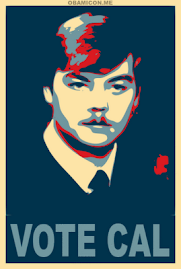Why December 5th is BRILLIANT
Grüß vom Krampus
December 5th is Krampusnacht. In parts of Europe, December 6th is the feast day of Saint Nicholas, otherwise known as Father Christmas. In Alpine countries, the night of December 5th is dedicated to his very scary companion, Krampus, whose name means ‘claw’. He is the anti-Santa. While Saint Nicholas rewards good children with presents, Krampus will visit the children who have been bad. He will either drown them, eat them or perhaps drag them off to Hell.
He’s a frightening figure, usually covered with black or brown hair. He has cloven hooves, a forked tongue and the horns of a goat. He often carries a a bundle of birch twigs to swat the children with and either a sack or a washtub strapped to his back to put naughty children in and carry them away. He also wears chains which sometimes have bells of differing sizes attached to them. The abduction of children part of the tradition may be a folk memory of a time when Moorish pirates arrived in Northern Europe, as far north as Iceland, stole children and sold them into slavery. Krampus shares his reputation as a punisher of naughty children with other companions of Saint Nicholas found elsewhere in Europe such as Zwarte Piet in the Netherlands, Knecht Ruprecht in Germany or Père Fouettard in France.
It’s pretty obvious that he is some sort of demonic figure and his chains may represent the binding of the Devil by the Christian Church. His origins are really unknown and he probably represents a Pagan god dating back to pre-Christian times who has been assimilated into the Christian Devil. Gods with horns were pretty important to our ancestors. Go back to 200BC – 300BC and you’ll find Cernunnos, the Celtic horned god. Go back a little further, to around 500BC and you’ll find the first mentions of the Greek god Pan. There is even a cave painting found in France which shows a human figure with horns. It dates back to around 13,000BC. Horned figures have been with us for a very long time and they’re probably not going away any time soon.
The Austrian government tried to ban Krampus in 1934 and in the 1950s they distributed pamphlets titled ‘Krampus is an Evil Man’. Since the end of the twentieth century Krampus has been regaining popularity. Perhaps people are tired of our modern Christmas with its rampant consumerism and are looking for something a bit different. Something a bit more wild and dangerous.
In some parts of Europe, people have exchanged Krampus greetings cards since the 1800s. Sometimes they picture him looming over bad children and sometimes the images have sexual overtones and show him running after young women. He often has one human foot and one cloven hoof. He might be celebrated with 'Krampuslauf’ which is a run of celebrants dressed as Krampus which is often fuelled by alcohol. Don’t think that this is a 'men only’ event though. Krampus has a female counterpart. There is an Alpine goddess called Perchta who might turn up sometime over the Christmas period to check we have all done enough weaving and spinning. If we have, she will leave a silver coin in our shoe. If we haven’t, she will slit open our bellies, rip out our guts and replace them with straw and pebbles. Which seems a bit harsh.
There are other European traditions which link Christmas celebrations with a horned animal. In Scandinavia, they have a 'Yule Goat’ and Father Christmas is sometimes pictured riding a goat. The Yule Goat was a spirit that would arrive in your home to check that you were making the correct preparations for the festival of Yule. It used to be a popular Christmas prank to fashion a crudely shaped goat and secretly place it somewhere in your friends house. Once they found it, they would have to pass it on in the same manner. If you’ve any doubt that Santa still has these associations, take a look at his reindeer. Also Father Christmas is Saint Nick, the devil is Old Nick. There’s got to be something there right? Has everyone been good this year? We hope so.



















































































































3 comments:
A very good and informative Krampus Post...
Krampus is Santa's Jungian shadow alright. And vice versa, of course.
I always like that dichotomy.
Post a Comment